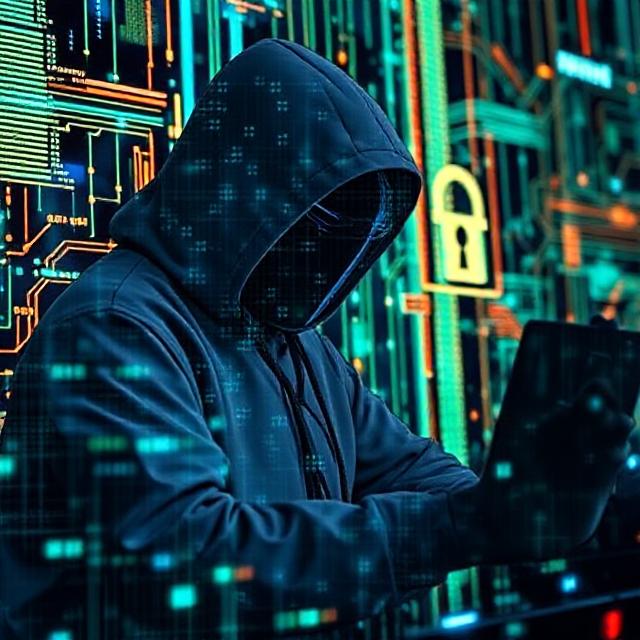Cybersecurity Technology Trends (2025)
Contents
Cybersecurity Technology Trends (2025)1. AI-Powered Threat Detection & Response2. Quantum-Resistant Cryptography3. Zero Trust Architecture (ZTA) Maturation4. Supply Chain Security5. Ransomware-as-a-Service (RaaS) Evolution6. Privacy-Enhancing Technologies (PETs)7. IoT/OT Security Prioritization8. Cloud-Native Security9. Cyber-Physical System Protection10. Autonomous Cyber Defense Systems11. Cybersecurity Mesh12. Regulatory & Compliance Overhaul13. Human-Centric Security14. Deepfake & Synthetic Media Defense15. Cybersecurity Skills Gap Mitigation
1. AI-Powered Threat Detection & Response
- Autonomous Defense: AI-driven systems (e.g., Darktrace, Palo Alto Cortex XDR) predicting and neutralizing threats in real time using behavioral analytics.
- Adversarial AI: Attackers using generative AI to craft sophisticated phishing campaigns, deepfakes, and polymorphic malware.
- Countermeasures: AI models trained to detect AI-generated attacks and automate incident response.
2. Quantum-Resistant Cryptography
- Post-Quantum Algorithms: Adoption of NIST-standardized encryption (e.g., CRYSTALS-Kyber, SPHINCS+) to safeguard against quantum computing threats.
- Challenges: Transitioning legacy systems to quantum-safe protocols without disrupting operations.
3. Zero Trust Architecture (ZTA) Maturation
- Continuous Authentication: Dynamic verification of users, devices, and workloads using biometrics, device posture checks, and context-aware policies.
- Microsegmentation: Granular network controls to limit lateral movement during breaches.
- Industry Adoption: Expanded use in critical infrastructure, healthcare, and government sectors.
4. Supply Chain Security
- SBOMs (Software Bill of Materials): Mandatory transparency in software components to detect vulnerabilities.
- AI-Driven Risk Scoring: Tools like Chainguard analyzing third-party dependencies for hidden risks.
- Regulation: Compliance mandates (e.g., U.S. Executive Order 14028) enforcing secure software development practices.
5. Ransomware-as-a-Service (RaaS) Evolution
- Double Extortion: Attackers encrypt data and threaten to leak it unless paid.
- AI-Enhanced Targeting: RaaS operators using machine learning to identify high-value victims (e.g., hospitals, utilities).
- Defense: Immutable backups, air-gapped systems, and decentralized storage solutions.
6. Privacy-Enhancing Technologies (PETs)
- Homomorphic Encryption: Processing encrypted data without decryption (e.g., secure healthcare analytics).
- Confidential Computing: Hardware-based secure enclaves (e.g., Intel SGX, AWS Nitro) protecting data in use.
- Decentralized Identity: Blockchain-based self-sovereign identity (SSI) minimizing data exposure.
7. IoT/OT Security Prioritization
- Unified Threat Management: Securing smart cities, industrial IoT, and medical devices with AI-driven anomaly detection.
- Regulatory Push: Standards like IEC 62443 for industrial control systems (ICS) and EU Cyber Resilience Act for IoT devices.
8. Cloud-Native Security
- CNAPP (Cloud-Native Application Protection Platforms): Integrating CSPM, CWPP, and CI/CD pipeline security.
- Serverless & Container Security: Runtime protection for Kubernetes, AWS Lambda, and other serverless environments.
9. Cyber-Physical System Protection
- Critical Infrastructure Defense: AI monitoring power grids, water systems, and transportation networks for sabotage.
- Space Cybersecurity: Securing satellites and space communication systems against nation-state attacks.
10. Autonomous Cyber Defense Systems
- Self-Healing Networks: AI automatically patching vulnerabilities and isolating compromised nodes.
- Deception Technology: Deploying AI-generated honeypots to mislead attackers.
11. Cybersecurity Mesh
- Interoperable Security Fabrics: Integrating tools across endpoints, clouds, and networks via APIs (e.g., Gartner’s concept).
- Benefits: Faster threat intelligence sharing and unified policy enforcement.
12. Regulatory & Compliance Overhaul
- Global Standards: Harmonizing frameworks like GDPR, CCPA, and China’s DSL for cross-border data flows.
- Cyber Insurance: Stricter requirements for coverage (e.g., mandatory multi-factor authentication, endpoint detection).
13. Human-Centric Security
- AI-Driven Social Engineering Defense: Training employees using hyper-realistic simulations of phishing and vishing attacks.
- Behavioral Biometrics: Continuous authentication based on typing patterns, mouse movements, and voice.
14. Deepfake & Synthetic Media Defense
- Detection Tools: AI models identifying inconsistencies in audio, video, and images (e.g., Microsoft Video Authenticator).
- Authentication Standards: Digital watermarking and blockchain-verified media provenance.
15. Cybersecurity Skills Gap Mitigation
- AI Copilots: Tools like Microsoft Security Copilot assisting analysts with threat hunting and remediation.
- Democratized Training: Gamified platforms and AR/VR simulations for upskilling non-experts.
An ongoing arms race between attackers using AI and defenders implementing autonomous, intelligent systems will characterize cybersecurity in 2025. Utilizing decentralized architectures, Zero Trust, and quantum safe encryption, organizations will place a high priority on resilience. But cooperation is key to succeed. To counter changing dangers while preserving privacy and creativity, governments, businesses, and individuals must cooperate.
Read Also; Blockchain Technology Trends (2025)
